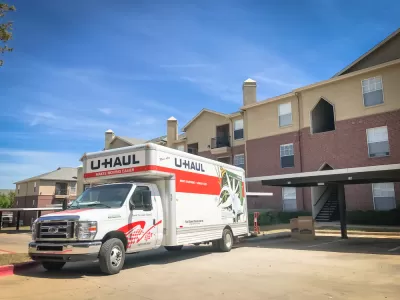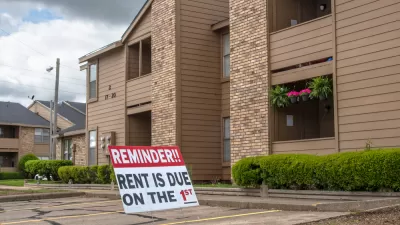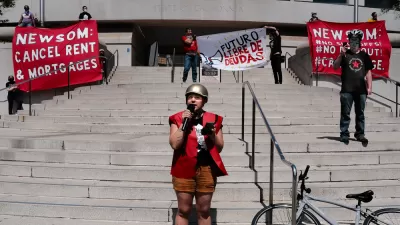A new report looks at pre-existing foreclosure and eviction rates to predict where the worst outcomes of the pandemic's economic downturn for homeowners and renters are likely to happen.

"Phoenix-area residents were more than twice as likely to lose a home to eviction or foreclosure than the typical U.S. resident before COVID-19 hit, and the rate of housing loss is expected to climb significantly because of the pandemic as well as rising home prices and rents, according to a new study," reports Catherine Reagor.
Reagor is sharing data from a report published recently by New America, a Washington, D.C.-based think tank. The study, titled "Displaced in America," identified the U.S. areas with the most acute pre-existing housing losses to predict where the COVID-19 crisis will hit renters and homeowners the hardest, explains Reagor.
Maricopa County, which includes Phoenix, had a housing loss rate of 4.5% between 2014 and 2018, more than double the national average, but some locations around the country had even higher housing loss rates, according to the report. Petersburg, Virginia, had the highest housing loss rate at 12.1%.
Reagor includes an explanation of the report's focus on the future of the housing and eviction crisis expected to hit the country as eviction and foreclosure moratoriums expire, including a section describing how the Maricopa County eviction process favors landlords. Reagor also lists the recommendations from the New America report that provides recommendations, specific to the Phoenix area, for mitigating the worst housing lost outcomes at risk with the pandemic and the resulting economic downturn.
FULL STORY: Metro Phoenix's eviction and foreclosure rates double U.S. average, new report says

Study: Maui’s Plan to Convert Vacation Rentals to Long-Term Housing Could Cause Nearly $1 Billion Economic Loss
The plan would reduce visitor accommodation by 25,% resulting in 1,900 jobs lost.

North Texas Transit Leaders Tout Benefits of TOD for Growing Region
At a summit focused on transit-oriented development, policymakers discussed how North Texas’ expanded light rail system can serve as a tool for economic growth.

Why Should We Subsidize Public Transportation?
Many public transit agencies face financial stress due to rising costs, declining fare revenue, and declining subsidies. Transit advocates must provide a strong business case for increasing public transit funding.

How to Make US Trains Faster
Changes to boarding platforms and a switch to electric trains could improve U.S. passenger rail service without the added cost of high-speed rail.

Columbia’s Revitalized ‘Loop’ Is a Hub for Local Entrepreneurs
A focus on small businesses is helping a commercial corridor in Columbia, Missouri thrive.

Invasive Insect Threatens Minnesota’s Ash Forests
The Emerald Ash Borer is a rapidly spreading invasive pest threatening Minnesota’s ash trees, and homeowners are encouraged to plant diverse replacement species, avoid moving ash firewood, and monitor for signs of infestation.
Urban Design for Planners 1: Software Tools
This six-course series explores essential urban design concepts using open source software and equips planners with the tools they need to participate fully in the urban design process.
Planning for Universal Design
Learn the tools for implementing Universal Design in planning regulations.
City of Santa Clarita
Ascent Environmental
Institute for Housing and Urban Development Studies (IHS)
City of Grandview
Harvard GSD Executive Education
Toledo-Lucas County Plan Commissions
Salt Lake City
NYU Wagner Graduate School of Public Service





























